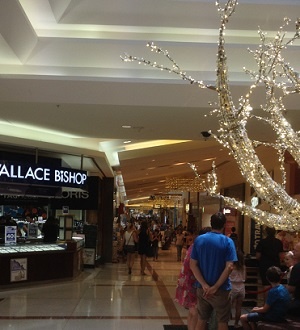
Uploaded on 2014-11-16 by Erics54
![Regional Shopping Centre][1] This regional shopping centre is the 4th largest in Australia and the largest in my home state of Queensland. The shopping centre has grown from its initial construction in the late 1950's to now include 145,000sqm of retail floor area. Post war development and the explosion in private car use allowed shrewd developers to capture this new transport freedom. The shopping centre is located on the historical Eastern Australian seaboard highway and became a natural location for one of the cities transport corridor and growth nodes. ![Roof Top Carparking][2] ![Basement Carparking][3] With roof top and semi-basement carparking for 6200 cars it is a attractor for vehicle movements. ![Transport Hub][4] Additionally the development also includes a bus interchange that allows regular and express bus transport to the CBD (Central Business District) and across town travel to other growth nodes. However being privately owned land, parking fees for long term carparking limit the potential of this transport mode. More intensive residential development surrounds the centre that both supports the efficiency of higher density and the retail, entertainment and service facilities within. ![local pre-war suburban corner stores][5] This is all a far cry from the 1940's era of less car use, walkable neighbourhoods with local corner shops now only supplying a very small percentage of the market. So with freedom of movement, we appear to have become captive to a significant institutional retailing landlord that requires significant energy use to support. Clearly transport change over the preceding 60 years has had a significant impact on the spacial arrangement of commercial and residential facilities. **ELECTRICITY** Private car use is an impact in itself with noise, pollution, traffic congestion, large carbon footprints per person among other things. But also regional shopping centres such as these require large amounts of electricity to support their operation. My analysis of this shopping centre based on a range of corporate documents suggest that approximately 40 Million megajoules of electricity is utilised per year. This figure includes tenant requirements and equates to the electricity use of approximately 1500 dwellings whilst supporting a market catchment of over 450,000 people. ![enter image description here][6] A significant component of this electricity use is airconditioning. Our abundance of coal and the construction of large coal fired regional power stations have enabled our preference for airconditioned malls and residences. Included with airconditioned motor vehicles, has encouraged and lifestyle that requires a seamless maintenance of these benign conditions and a denial of our sub-tropical climate. This lifestyle preference has contributed to Australia being a leading contributor to Global greenhouse gas emissions on a per/capita basis. The achievement of productivity improvements through more pleasant leisure environments will only be a moot point if outweighed by the economic costs of climate change. [1]: https://edxuploads.s3.amazonaws.com/14161117474190774.jpg [2]: https://edxuploads.s3.amazonaws.com/14161124988628678.jpg [3]: https://edxuploads.s3.amazonaws.com/14161127442239009.jpg [4]: https://edxuploads.s3.amazonaws.com/1416112872577999.jpg [5]: https://edxuploads.s3.amazonaws.com/14161180406334407.jpg [6]: https://edxuploads.s3.amazonaws.com/14161201631167524.jpg